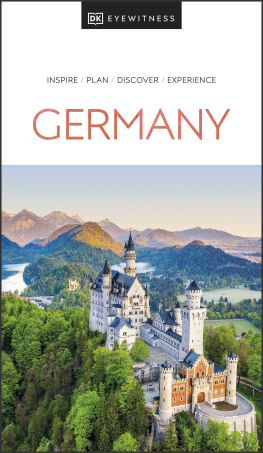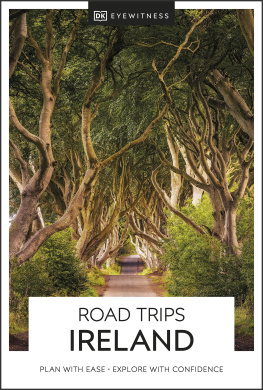CONTENTS
g
HOW TO USE THIS eBOOK
Preferred application settings
For the best reading experience, the following application settings are recommended:
- Orientation: Portrait
- Color theme: White background
- Scrolling view: [OFF]
- Text alignment: Auto-justification [OFF](if the eBook reader has this feature)
- Auto-hyphenation: [OFF](if the eBook reader has this feature)
- Font style: Publisher default setting [ON](if the eBook reader has this feature)
- In Settings, change the font sizeto a size you are most comfortable with.
g
About this Book
Road Trips Spain aims to get visitors off the main highways, make discoveries and to get a real feel of the life and riches of Spain. The trips take visitors across Spain around all kinds of enthralling corners that lie off the well-trodden routes fascinating old towns, placid villages in exquisite settings, and a prodigious variety of scenery, from dramatic mountain peaks and vast brown plains to idyllic green valleys and hidden beaches. On the byways of Spain you can find many of its most ancient monuments and most rumbustious local festivals, as well as the vineyards that produce its finest wines, rich traditional foods, innovative restaurants in remote places and delightful small hotels.
Getting Started
The guide begins with all the practical information you need to plan a driving holiday in Spain. This includes an overview of the best times to visit, ways to get there, the documentation that you will need, important motoring advice, and places to eat and stay. A language section at the back lists essential words and phrases, including key driving-related vocabulary.
The Trips
The 25 trips featured in this guide are spread across the whole of mainland Spain, Mallorca and Ibiza. They take visitors on leisurely tours through Spains many and varied regions on country roads, avoiding main highways unless it is absolutely unavoidable. The trips have been selected to be accessible from different parts of the country, and to give a taste of the huge diversity of Spain so some take you through the steep green valleys of Galicia or the alpine mountains of Asturias or the Pyrenees, while others visit the sun-toasted villages of Don Quixotes La Mancha or the beaches and coastal villages of Andalusia. Some trips include celebrated towns and attractions like Santiago de Compostela or Granada, but then they show you how to get to the next stop along quiet, minor roads. Throughout, the emphasis is given to exploring places that have a real feel of being away from it all.
All of the featured trips in this guide can be explored with a standard-model car, and by any normally experienced driver. Country roads can be narrow, and in mountain areas they will twist and turn, but there are no great risks in getting around them, at least in good weather. In Spain, even remote valley roads are generally in fine condition.
Each of the trips presents a range of possible activities to try market shopping, wine tasting, exploring the mountains or keeping the kids entertained on the beach and each one also includes a route for a walk, in a special town or beautiful countryside. Trips of more than one day can also be divided into single day tours which allow visitors to return to their starting point at the end of each day. Places to stay and eat listed with each trip have been carefully selected for individuality, quality and charm. And after each stop there are clear road directions to continue the drive to the next stop.
Top left Blooming bougainvillea in Salobrea Top right Fascinating rock formation of the Mallos de Riglos in Aragn Middle left Maro cliffs in Cerro Gordo Middle right Terrace bar in medieval Potes Below left Museo Cueva in Guadix Below right Bullring in Las Virtudes

Rocky coastline of Mallorca
g
Introducing Spain
The essence of Spain lies in the variety it has to offer. It is the most mountainous country in Europe, and has western Europes only real desert, in Almera. Behind the Atlantic coasts of Galicia and Asturias there are still bears and wild boars in the deep-green forests of oak and beech, while to the south the summer sun roasts the bare, rugged hills golden brown between the olive groves. In different parts of Spain three languages Catalan, Basque and Galician enjoy official status with Castilian Spanish. This linguistic variety is further reflected in the vigour of local festivals and traditions, and the delicious range of regional cuisines.

Mountain village in Aragn
When to Go
Late March to early July is an ideal time for visiting most parts of Spain, as temperatures remain pleasantly warm. In dry Spain, from the Cantabrian mountains to Andalusia, spring sees a burst of new life before the torrid heat of summer, with flashes of wild flowers by the roadsides. Temperatures rise sharply in July and August, above all in the centre and south, and while there is plenty going on especially local festivals whether visitors wish to travel then may depend on how much they like the heat, and the crowds. September into October is another delightful time to visit, with clear, warm skies, and the grape harvest beginning in vine-growing areas. In late autumn, from mid-October on, the weather gets chillier and wetter in the north, but many areas have seasonal attractions at this time too, often to do with special foods. From December to March, snow and ice can make travel more difficult in mountain areas, but this is also the winter sports season.

People sitting in a caf on the main square in Altea, Valencia
Times to Avoid
The majority of Spains population takes its holidays in late July or August, and this is also the most popular time for foreign visitors so roads are congested, prices go up and hotel rooms are harder to come by. Added to that, in many areas the temperature lingers above 30 C (86 F) . Country areas not far from major cities can get very busy on fine weekends at any time of year. Some monuments, museums and other attractions in country areas are closed from November to February or March, so check before travelling. In mountain areas such as Asturias or the Pyrenees, the transitional times between the summer and winter are often rainy with poor visibility, and hence not ideal for touring.
Festivals
Easter is the most widely marked religious festival, above all in Valencia, Andalusia, central Spain and Alicante. The eve of the Feast of St John the Baptist , 23 June, is known for loud revelry with bonfires and fireworks. Early July sees the bull-running of San Fermn in Pamplona, one of Spains most famous festivals. The summer months are the most popular time for each town or village to have its fiesta mayor . From September cultural programmes get going in cities and towns, and many country areas have celebrations of their special products such as wine, mushrooms or ham. Christmas has a special touch, with traditional fairs in many places. Winter comes to an end in several towns with the raucous partying of Carnaval , in late February or March.
























